A light encounter
As you learned in the previous post, on August 24 of last year I photographed two turkey vultures in a tree in northeast Austin. I was drawn to that place because I’d caught a glimpse of a large structure looming in the woods on the north side of E. Braker Lane where nothing of that size had a right to be. After photographing the vultures, I walked around the corner and along the edge of the woods, and then into them, where I found not only plenty of poison ivy but also the ruins of two concrete silos that no previous drive-bys had led me to suspect were there. Here from last year is a picture of the lush but poisonous plants and one of the silos. Up the side of the silo you can make out a column of windows that will be relevant for what follows.
In some ways this creepy scene could be the dark encounter referred to in the title of yesterday’s post, but it isn’t. And some of you may have wondered why, with all the wildflowers coming up in Austin and in so many recent posts, I’ve abruptly forsaken them and jumped back to last year. The reason is that a week ago, on March 14 of this year, I returned to the place you see here. The poison ivy was just beginning to leaf out, as I’ve seen it doing in other places around town. The two silos were still there, and as I walked around to the openings in one of them, a vulture that had been on the dirt floor inside was startled by my sudden appearance; it flew up and landed briefly on the base of one of the windows slightly above the level of my eyes and pretty close to me, then flew out and away. When I climbed through the lowest window and entered the silo, here’s what I found on the ground at the opposite side of the circular earthen floor:
The turkey vulture had apparently been sitting on these eggs when my arrival scared it away. I hope the bird returned after I left, and I hope the graffiti on the walls inside the silo aren’t a sign of continuing human presence there. Whether the little snail shell and others like it nearby had any connection to the vulture, I don’t know.
© 2012 Steven Schwartzman


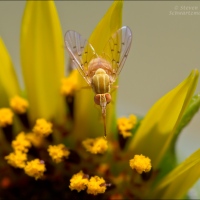
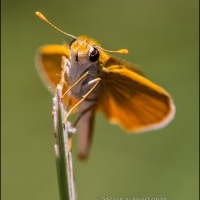
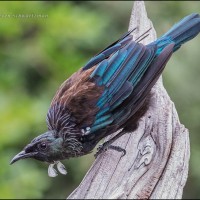
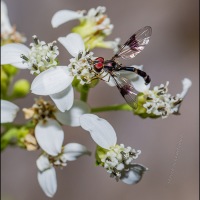
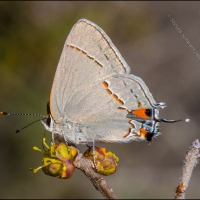
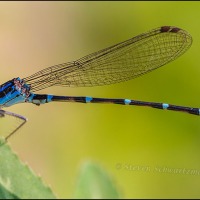

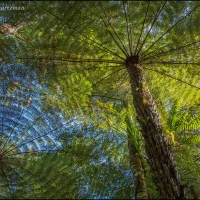
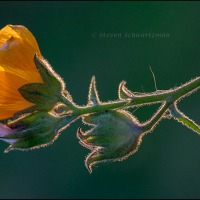
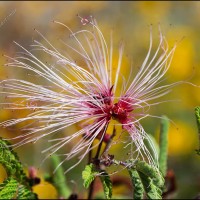
Oh my! So did you get poison ivy, too? Take care, and yes, we do hope the turkey vulture comes back. You do go through great lengths to teach us so much.
georgettesullins
March 21, 2012 at 6:35 AM
Luckily there was a makeshift path around the poison ivy. I don’t want to jinx myself by saying this, but so far I’ve never been affected by poison ivy. But there’s no reason to chance it, and I do my best to avoid contact with it.
As for teaching, I’m as much on the receiving end as anyone. This time I learned what vulture eggs look like. In The Birds of Texas, John Tveten says that turkey vulture eggs come in pairs, something I confirmed here.
Steve Schwartzman
March 21, 2012 at 7:09 AM
I’m not affected by poison ivy. Someone told me that isn’t right since she was a botanist and knew these things. I didn’t argue with her, but I have walked through it and not had the usual reactions. My cousin is the same way.
And for the turkey vultures…so fascinating! love nature. 🙂
emerrube
March 21, 2012 at 7:30 AM
I’ve read in various books that not everyone is susceptible to the urushiol (the irritant) in poison ivy. Still, I don’t push my luck and do my best to avoid any contact.
I knew almost nothing about turkey vultures before, so I can say that even the little I know now is a lot more.
Steve Schwartzman
March 21, 2012 at 7:43 AM
Hi Steve .. glad you’re not affected by the poison ivy .. and I do hope the turkey vulture came right back and cherishes those eggs .. they look huge! Cheers Hilary
hilarymb
March 21, 2012 at 7:33 AM
It’s a large bird, so its eggs are pretty large too.
Steve Schwartzman
March 21, 2012 at 7:45 AM
What a great, unexpected treasure! It surprises me that they made their nest at ground level. I think of them more on rocky ledges. They must have felt very protected in here. Perhaps the juxtaposition of their nest with the graffiti has some larger significance. Years from now archeologists will speculate about the “ancient ones” who worshipped at this nesting site of the “dark bird.” 🙂
ovsoutdoors
March 21, 2012 at 8:24 AM
Yes, it was quite a surprise. I don’t think I’d ever come across bird eggs on the ground before. Apparently the bird felt protected inside the silo, and perhaps no people had been there recently to make it wary.
It sounds like you could write a fantasy story along the lines you’ve described, about the ruins of an ancient worship site to a sacred bird. That makes me wonder how ancient peoples viewed vultures, and if any tribes revered them. People in our culture seem mostly repulsed by them.
Steve Schwartzman
March 21, 2012 at 9:09 AM
The native Chumash people here in Southern California revered the California condor. Images of them are found in rock art sites. In Nepal or Tibet, maybe both, one type of funeral was called “sky burial.” The corpse was left for the vultures to devour so souls could be borne to the heavens on their wings. Truth is often much stranger and more lovely than fiction.
ovsoutdoors
March 21, 2012 at 2:08 PM
Thanks for the information about sky burials in the Himalayas. I seem to remember hearing that some of the American Indian tribes had a similar custom.
Steve Schwartzman
March 21, 2012 at 3:50 PM
The turkey vulture eggs were a great discovery. Like you, I hope the parent came back. Now I’m wondering if turkey vultures always nest on the ground.
I was also surprised about the concrete silo because I just discovered one too while doing a woodland walk here in Ohio (http://wp.me/p2gvYB-2i). Mine had no poison ivy even though that’s pretty common here. And I couldn’t see any windows or opening into the silo from my vantage point.
Deb Platt
March 21, 2012 at 9:39 AM
Yes, they were a great discovery, a first of a kind for me. Perhaps bird experts know whether turkey vultures always make their nests on the ground.
Thanks for the link to your article. Perhaps authorities closed up any openings to the ruined silo to keep people from going inside; I noticed from your picture of the pioneer cabin that it seemed similarly boarded up. Or perhaps the opening was on the opposite side, leaving open the possibility for a return visit; let’s hope no poison ivy will have sprung up.
Steve Schwartzman
March 21, 2012 at 9:52 AM
Just guessing, but I think she flew away to distract you from the nest. It obviously didn’t work on you, and that was a good thing because now we get to see her lovely eggs! ~ Lynda
pixilated2
March 21, 2012 at 12:10 PM
You may well be right that her movement was intended to distract me. I hadn’t thought about that.
Steve Schwartzman
March 21, 2012 at 3:37 PM
Cool – to photograph vulture eggs – love your 1st photo too – thanks for sharing!
cravesadventure
March 21, 2012 at 1:40 PM
It was certainly a first for me. As for the first picture, I don’t normally show photographs with human elements in them, but when there’s a reason to I do; in this case, it set the scene for where the vulture was sitting on her eggs. I’m with you in liking the picture for its own sake. I find the scene somewhat creepy but still intriguing.
Steve Schwartzman
March 21, 2012 at 3:44 PM
Quelle chance de tomber sur ce nid. La nature n’est pas hostile pour tout le monde…
lancoliebleue
March 22, 2012 at 2:13 AM
C’est vrai, j’ai eu de la chance. Et vous, les européens, avez de la chance: vous n’avez pas de sumac vénéneux (je crois).
Steve Schwartzman
March 22, 2012 at 6:07 AM
Non, nous n’en avons pas et je n’en suis pas malheureuse 😉 La plante qui apporte démengeaisons chez nous avec réactions cutanées est l’ortie, qui est très courante, mais les piqures et cloques s’atténuent rapidement.
lancoliebleue
March 22, 2012 at 6:13 AM
Ici au Texas nous avons aussi des espèces d’ortie, et de cactus, et de…. Quelle terre hostile!
Steve Schwartzman
March 22, 2012 at 6:48 AM
That is indeed a very creepy scene, but fascinating as well. I’m glad you were adventurous enough to climb in and check it out for us. Thanks!
skip704
March 22, 2012 at 7:02 AM
You echo my sentiments: creepy but fascinating.
Steve Schwartzman
March 22, 2012 at 5:12 PM
[…] How about two turkey vulture eggs? […]
Another year’s fun with search criteria « Portraits of Wildflowers
January 1, 2013 at 6:14 AM